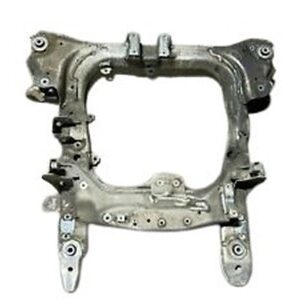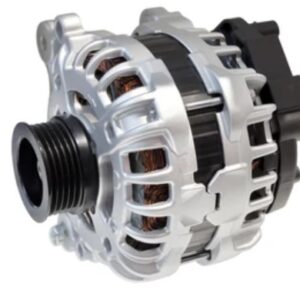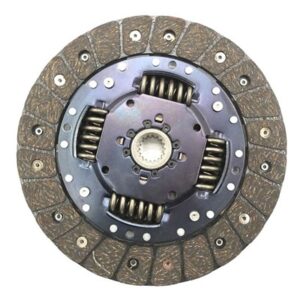The Timing Cover is an essential component of an internal combustion engine, serving as a protective shield for the timing mechanism. It plays a crucial role in safeguarding the timing belt or chain, ensuring that the engine’s timing remains accurate and reliable. This cover is integral to maintaining the engine’s performance, efficiency, and longevity.
Material and Construction
Timing covers are constructed from materials selected for their durability, heat resistance, and ability to protect the timing components:
- Aluminum: Many are made from aluminum due to its lightweight properties and excellent heat dissipation capabilities. Aluminum covers are commonly found in performance and high-end vehicles.
- Steel: Some are constructed from steel, which provides strength and durability. Steel covers are often used in more traditional or heavy-duty applications.
- Plastic: Modern vehicles may be made from high-strength plastic composites. Plastic covers are lightweight and resistant to corrosion, though they may not offer the same level of heat resistance as metal covers.
- Rubber or Silicone Seals: They typically include rubber or silicone seals to prevent oil leaks and protect the timing components from contaminants.
Design and Functionality
The timing cover is designed with several key features to ensure its effectiveness and protection:
- Protection: The primary function of the is to shield the timing belt or chain, along with related components, from dirt, debris, and damage. This protection helps maintain the integrity of the timing mechanism and ensures accurate engine timing.
- Sealing: The includes seals and gaskets to prevent oil leaks and ensure a tight fit. Proper sealing helps maintain the engine’s lubrication system and prevents contaminants from entering the timing area.
- Access Points: The may feature access points or openings for servicing and maintenance of the timing belt or chain. These access points allow for inspections, adjustments, or replacements without removing the entire cover.
- Heat Management: Some timing covers include heat shields or insulation to protect the timing mechanism from excessive engine heat. This helps to prevent degradation of the timing belt or chain and maintains optimal engine performance.
Performance and Benefits
The timing cover contributes to several aspects of engine performance and reliability:
- Timing Accuracy: By protecting the timing belt or chain, the timing cover ensures that the engine’s timing remains accurate. Proper timing is crucial for optimal engine performance, fuel efficiency, and emission control.
- Oil Containment: This helps to contain engine oil and prevent leaks, ensuring that the timing mechanism remains lubricated and protected from potential damage.
- Contaminant Protection: By shielding the timing components from dirt, debris, and moisture, the timing cover helps prevent potential damage and ensures the longevity of the timing mechanism.
- Reduced Maintenance: A well-maintained reduces the need for frequent servicing by preventing leaks and protecting the timing mechanism. This leads to lower maintenance costs and improved engine reliability.
Maintenance and Care
Proper maintenance and care of the timing cover are essential for ensuring its effectiveness and preventing potential issues:
- Regular Inspection: Periodically inspect the for signs of leaks, cracks, or damage. Check the seals and gaskets for wear or deterioration, and replace them if necessary.
- Oil Changes: Regularly change the engine oil and filter to prevent contamination and ensure proper lubrication. This maintenance helps to prolong the life of the timing cover and related components.
- Cleanliness: Keep the surrounding area clean to prevent the buildup of dirt and debris. This helps maintain a proper seal and prevents potential leaks.
- Professional Servicing: If you notice any issues with the timing cover, such as oil leaks or engine performance problems, have a professional mechanic inspect and service the cover as needed.
Advanced Features and Technologies
Modern timing covers may include advanced features to enhance their performance and functionality:
- Integrated Sensors: Some incorporate integrated sensors for monitoring timing belt or chain condition, engine temperature, or other parameters. These sensors provide valuable data for engine diagnostics and performance optimization.
- Enhanced Heat Management: Advanced may feature improved heat management technologies, such as heat shields or thermal barriers, to protect the timing mechanism and maintain optimal engine performance.
- Custom Designs: High-performance or custom vehicles may be designed with unique styles, finishes, or branding elements. Custom designs can enhance the engine bay’s appearance and reflect the vehicle’s personality.
Conclusion
The timing cover is a vital component that plays a key role in protecting the timing mechanism, maintaining accurate engine timing, and ensuring overall engine reliability. Its durable construction, sealing features, and protective capabilities contribute to engine performance and longevity. Regular maintenance and timely care of the timing cover are important for preventing leaks, protecting the timing components, and maintaining optimal engine operation. By understanding the functions and benefits of the timing cover, vehicle owners can ensure their engine operates smoothly and remains in excellent condition.









There are no reviews yet.